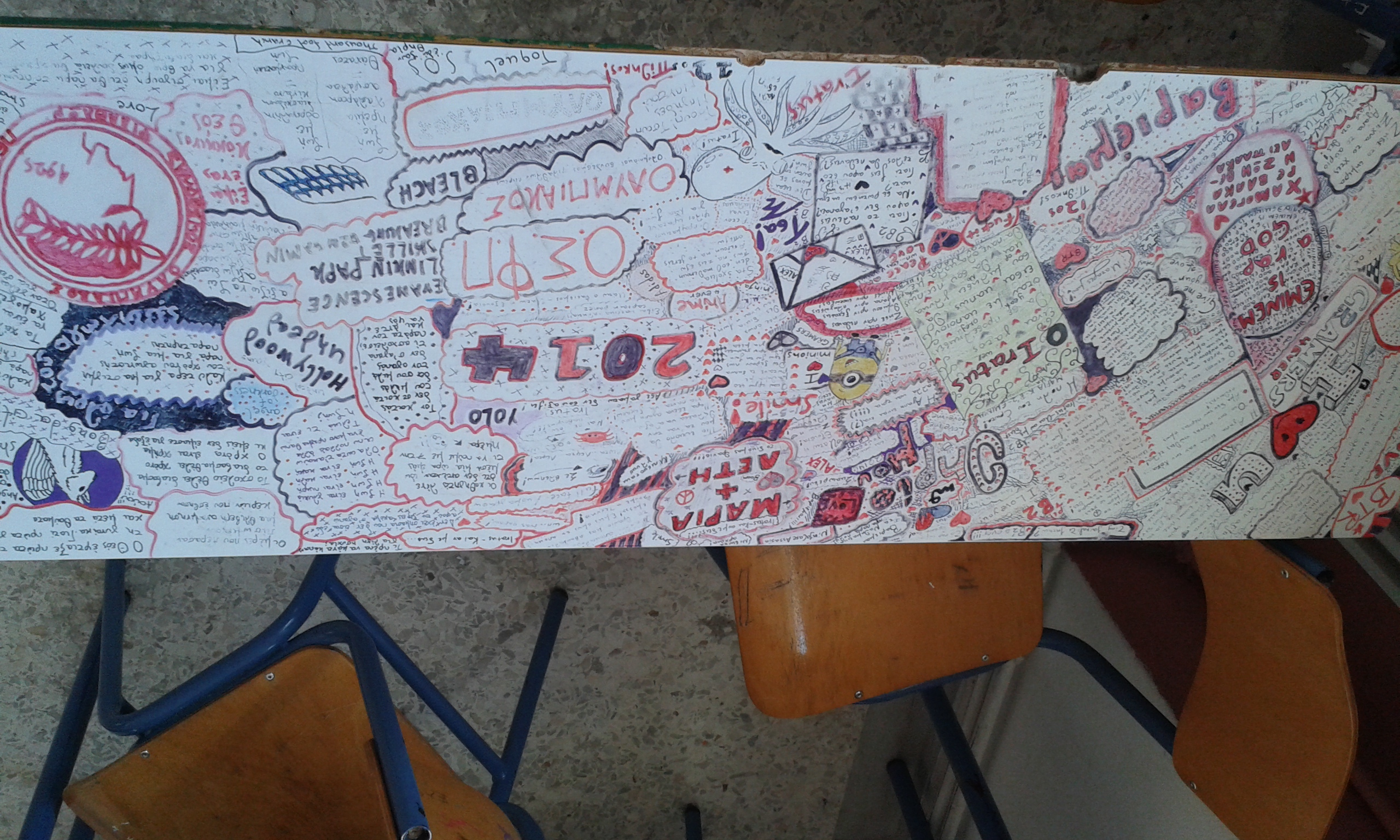Technology by Alessia Polesel, Catalina Gordila, Benedetta Sbrogiò
Video of Technology by Benedetta Sbrogiò, Alessia Polesel, Catalina Gordila
Look also at this video by the same group!
https://www.youtube.com/watch?v=2gIXX3_8Los
TECHNOLOGIES MAKE US ANTISOCIAL
Bullying and Doodling
by Gousi Leti
What about the bully?
Bullying is the use of force, threat, or coercion to abuse, intimidate, or aggressively dominate others. The behavior is often repeated and habitual. One essential prerequisite is the perception, by the bully or by others, of an imbalance of social or physical power, which distinguishes bullying from conflict. Behaviors used to assert such domination can include verbal harassment or threat, physical assault or coercion, and such acts may be directed repeatedly towards particular targets. Rationalizations for such behavior sometimes include differences of social class, race, religion, gender, sexual orientation, appearance, behavior, body language, personality, reputation, lineage, strength, size or ability. If bullying is done by a group, it is called mobbing.
When we see actions like this we often criticize the bully and immediately feel empathy for the victim. But we don’t seem to care about what were the bully’s motives or why would this person do something like that? Researches show that self esteem, envy or even exposure to bulling can lead someone to act like that. If that’s the case maybe we should be concerned not only with the victims emotional state and metal health but with bully’s too. It is possible that the person who wants to hurt others in any way probably needs help and that is not always the case, most of the time people will abandon a person like that something that will lead in deepening the problem rather than solving it. Punishment is not the best solution in this case because it will not stop a person completely from doing it if not only worsen the length of his actions. Maybe if we could get the victim and the bully in the same room under the watch of a professional we could get good results and find a much better way to stop the acting. Maybe the big bad kid in school who wants to be scary is actually more scared than us and it actually needs some help. Of course if we want to see a world without actions like this maybe we could interfere in a scene like that and not walk away pretending to not see a thing.
To sum up, we should criticize the action itself and try to help both the bully and the victim at the same time, but we can do this only when we are ready to stand up for someone and not coward away.
......................................................................................................................................................................................................................
Doodle
A doodle is a drawing made while a person's attention is otherwise occupied. Doodles are simple drawings that can have concrete representational meaning or may just be composed of random and abstract lines, generally without ever lifting the drawing device off of the paper, in which case it is usually called a "scribble". Doodling and scribbling are most often associated with young children and toddlers, because their lack of hand–eye coordination and lower mental development often make it very difficult for any young child to keep their coloring attempts within the line art of the subject. Despite this, it is not uncommon to see such behavior with adults, in which case it generally is done jovially, out of boredom. Typical examples of doodling are found in school notebooks, often in the margins, drawn by students daydreaming or losing interest during class. Other common examples of doodling are produced during long telephone conversations if a pen and paper are available. Popular kinds of doodles include cartoon versions of teachers or companions in a school, famous TV or comic characters, invented fictional beings, landscapes, geometric shapes, patterns and textures.
There are many times were the person will draw something from his everyday life, something that’s surrounds him. When we see a heart on someone’s notebook that means that he might be in love. Or when we see wings it might be because he wants freedom. Most people when trying to express through art they mirror what they see or what they feel. Sometimes a message may be hidden inside a drawing. So why could it be different with doodling? The drawings may consciously or unconsciously hide aspects of the person’s everyday life, maybe while bored he is drawing what comes first to his or her mind or actually draws an emotion, a goal. Well the only way to find out is ask the person itself but by all means we shouldn’t just think that the content of the doodle might be deeper than just a little drawing while bored.
........................................................................................................................................................................................................................
and Leti's desk some years ago...

https://youtu.be/pwuLDu3Pb8Y